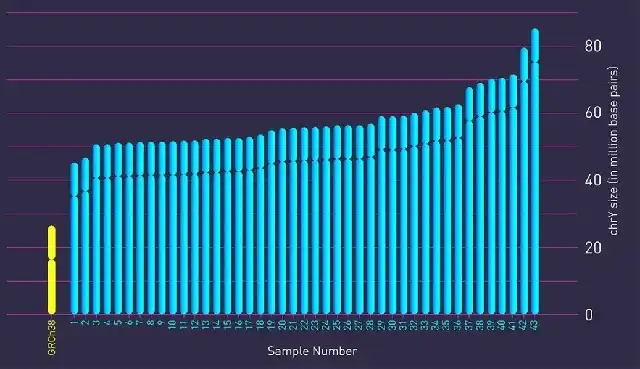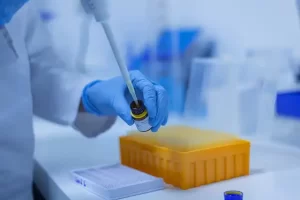Why Are Male Genes Disappearing?
- Paternal Microbiome Perturbations Impact Offspring Fitness
- New Report Casts Doubt on Maradona’s Cause of Death and Rocks Manslaughter Case
- Chinese academician unable to provide the exact source of liver transplants
- Early Biomarker for Multiple Sclerosis Development Identified Years in Advance
- Aspirin Found Ineffective in Improving Recurrence Risk or Survival Rate of Breast Cancer Patients
- Child Products from Aliexpess and Temu Contain Carcinogens 3026x Over Limit
Why Are Male Genes Disappearing?
- AstraZeneca Admits for the First Time that its COVID Vaccine Has Blood Clot Side Effects
- Was COVID virus leaked from the Chinese WIV lab?
- HIV Cure Research: New Study Links Viral DNA Levels to Spontaneous Control
- FDA has mandated a top-level black box warning for all marketed CAR-T therapies
- Can people with high blood pressure eat peanuts?
- What is the difference between dopamine and dobutamine?
- How long can the patient live after heart stent surgery?
Why Are Male Genes Disappearing? Two Nature Articles Reveal the Genetic Secrets of the Human Y Chromosome…
The Y chromosome is the true essence of masculinity in males, as it carries genes responsible for male traits and sperm production.
The Y chromosome is peculiarly small in size and possesses a rather odd appearance. It harbors a limited number of genes and is riddled with reverse, repetitive DNA segments, making sequencing it a formidable challenge. Comprehensive sequencing of the Y chromosome was once considered an impossible task.
However, recent advances in “long-read” sequencing technology have finally unveiled the complete genetic information spanning the entire Y chromosome, achieving comprehensive and reliable sequencing of Y chromosomes from dozens of males worldwide.
This monumental and groundbreaking work was published in the journal “Nature” in August of this year. Experts agree that it will guide our exploration of gender genes, the mechanisms of sperm genes, our understanding of the evolutionary path of the Y chromosome, and whether it is destined to disappear in millions of years, as some predictions suggest.
SRY Guides the Growth of Men
Approximately sixty years ago, scientists discovered a special chromosome determining the birth gender of humans and other mammals. Females possess a pair of X chromosomes, while males have one X chromosome and a much smaller Y chromosome.
The Y chromosome determines male gender because it carries a gene called SRY, which instructs the development of testes within the embryo. Embryonic testes produce male hormones, leading to the development of male characteristics in infant boys.
XX embryos lack the Y chromosome and the SRY gene, causing the same embryonic tissue to develop into ovaries. Subsequently, female hormones induce the development of female characteristics in infant girls.
Y Chromosome: A DNA Junkyard?
As mentioned earlier, the Y chromosome is quite unique compared to the X chromosome and the other 22 autosomal chromosomes. It is notably smaller in size and carries fewer genes, with only 27 compared to approximately 1000 genes on the X chromosome.
Y chromosome genes include SRY, a handful of genes guiding sperm production, and some seemingly vital genes—many of which have counterparts on the X chromosome. Several Y chromosome genes, including RBMY and DAZ, exist in multiple copies. Furthermore, as previously mentioned, DNA sequence inversions and deletions are common.
The Y chromosome also contains a substantial amount of DNA sequences that appear to be irrelevant to biological traits. These “junk DNA” sequences consist of highly repetitive elements, originating from fragments of ancient viruses, defunct genes, and simple repeats of bases.
A majority of these repetitive base sequences occupy most of the Y chromosome and can be visualized under a microscope with fluorescent dyes.
The Peculiar Y Chromosome
Why is the Y chromosome so unique? To understand this, we need to look back at its evolutionary history.
There is ample evidence suggesting that 150 million years ago, the X and Y chromosomes were just a pair of ordinary chromosomes (birds and monotremes still exhibit this trait), with no discernible differences between them. Each parent contributed one chromosome, just like autosomal chromosomes.
Later, the SRY gene on this chromosome pair evolved, defining a new proto-Y chromosome. This primitive Y chromosome was permanently confined to the testes and underwent a series of mutations due to extensive cell division and minimal repair.
The proto-Y chromosome quickly degenerated, losing about 10 active genes per million years. Its gene count dwindled from the original 1000 to the current meager 27. One small region at one end, known as the “pseudoautosomal” region, remained conserved and is identical to the X chromosome.
There is considerable debate in the scientific community about whether this degeneration will continue. At the current rate, the Y chromosome in the entire human population is expected to disappear in millions of years, similar to what has happened in certain rodent species.
Technological Upgrades Drive Sequencing Breakthroughs
The first draft of the human genome was completed in 1999. Since then, scientists have successfully sequenced all autosomal chromosomes and the X chromosome, with only a few gaps remaining.
They achieved this using short-read sequencing technology, which involved cutting DNA into small fragments of about 100 bases and then reassembling them like a jigsaw puzzle.
Y Chromosome: Much Smaller Than the X Chromosome
It wasn’t until recently that new technology allowed for the sequencing of individual long DNA molecules, resulting in long read segments containing thousands of bases. These longer read segments are easier to distinguish and therefore easier to assemble. This technological advancement enabled scientists to decode the perplexing repeats and circular structures on the Y chromosome.
Y Chromosome Variability
In March of this year, bioinformaticians from the National Human Genome Research Institute in the United States, led by Adam Phillippy, reported the complete sequencing of the human genome, excluding the Y chromosome. At the time, the T2T consortium, which they were part of, announced on social media that they had mastered the Y chromosome sequence.
Now, as they have detailed in their new publication in “Nature,” the complex arrangement of the 62 million bases of the Y chromosome has been thoroughly deciphered, including the 30 million bases that were previously missing in some sequencing efforts.
After sequencing 43 Y chromosomes from males of 21 different populations worldwide, the research team found significant genetic variation among them. Charles Lee, one of the team members, remarked:
“I was surprised by the variation in the number of copies of certain genes on the Y chromosome. For example, one male (A) has 23 copies of a gene called TSPY, which is thought to be involved in sperm formation, while another male (B) has 39 copies of TSPY on his Y chromosome.”
Additionally, they discovered differences in the size and composition of the repetitive regions on the Y chromosome.

The figure above shows that the size of the Y chromosome varies greatly between individuals.(image source: nature)
Geneticist Mark Jobling, not involved in the work, pointed out that the organization and conservation of DNA on the Y chromosome indicate that it has not degenerated to the brink of disappearance. “This paper confirms that the gene content of the Y chromosome is fundamentally conserved, completely debunking the idea that the Y chromosome is still degenerating and on the brink of disappearance.”
It is currently unclear whether these variations affect male fertility or other traits. However, knowing of their existence provides a foundation for future research. Researchers can now conduct large-scale studies to explore the relevance of Y chromosome variations to health issues, such as bladder cancer linked to the Y chromosome.
Why Are Male Genes Disappearing?
(source:internet, reference only)
Disclaimer of medicaltrend.org
Important Note: The information provided is for informational purposes only and should not be considered as medical advice.



